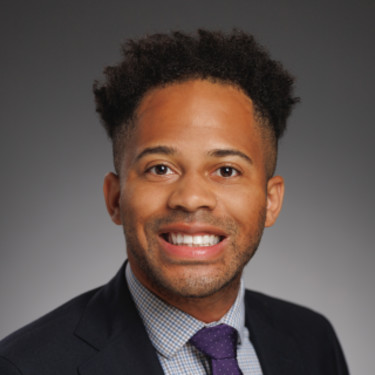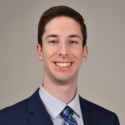The construct of NPs being either supervised or practicing autonomously remains at the center of high emotion and heated controversy. As an NP, I have personal feelings about this. I am also concerned about the impending shortages of physicians in the U.S. and the challenges we face as a health care community in providing high-quality, high-value care to every individual, no matter where they live.
NPs are highly thought of by patients. Patients with certain conditions treated by NPs have outcomes comparable to those treated by physicians, as demonstrated in numerous studies. While these studies generally do not consider the medical complexity of patients, they support the claim that NPs can autonomously provide safe and effective care to suitable patients.
AAMC indicates that the U.S. could face a shortage of 37,800 to 124,000 primary and specialty care physicians by 2034.
While over 355,000 licensed NPs are in the U.S., we do not have exact numbers for how many practice in rural areas. More than 18% of the U.S. population lives in rural areas. These settings often face unique challenges, such as limited access to clinics, higher rates of chronic illness, lower economic resources for health care, and an aging population. NPs can help bridge this gap by offering high-quality primary care, and they are vital in areas with few physicians.
AAMC reports that only 11% of physicians practice in rural areas. A clear and timely solution to this gap lies before us if we utilize and employ NPs to fill this role. The Institute of Medicine has recommended that NPs be allowed to practice to the full extent of their training and licensure to build the necessary workforce to meet the health care needs of the growing number of individuals living in medically underserved regions. However, in many states, the working relationship with physicians providing oversight varies from collegial and collaborative to restrictive or requiring direct oversight.
Currently, 22 states require NPs to work under a physician's supervision or collaboration. This is referred to as “reduced or restricted practice authority,” meaning NPs cannot practice autonomously and must have some level of MD oversight. Typically, this involves chart reviews biannually and a contract that limits the activities and prescribing authority of the NP. In rural areas of these 22 states, where NPs may own and operate a primary care practice, they must pay a physician to provide these two annual signatures and prearranged consultation support. This can be prohibitive in some cases; if a supervisor retires or departs, the NP can no longer practice immediately. At that moment, they have no licensure and cannot provide any form of care for their patient panel.
A supervisory or collaborative relationship is not necessarily restrictive and punitive. Although I am fortunate to have an excellent working relationship with my supervisor, who allows me to work to the top of my scope, it may be another story entirely if I did not, and worked in one of the rural areas of my state and could not do the right thing for patients due to oversight requirements.
Such was the recent case with a story I became aware of through a conversation with our State Board of Nursing representative. In a primary care/urgent care clinic on the Outer Banks of North Carolina, a highly experienced NP was the only licensed clinician in the area and was supervised by an out-of-state MD. When this physician retired, her practice immediately closed because she was not permitted to work by the State Board, leaving patients in the large vicinity without health care, even in the case of emergencies. In the end, she moved out of the state to a full practice state, given the moral distress of being unable to do her job. In this situation, lives were at stake due to the restrictions on her medical license.
In another instance in the same state, an NP owned a rural practice that provided continuity care and mental health services to a large patient panel. When her supervising MD left N.C., she was forced to shutter her practice. As a result, the local rural ED was flooded with patients who were desperate for their stabilizing medications. The influx of these patients choked the capacity of the already limited emergency care services, creating backlogs and barriers for other acutely ill patients.
Physicians who object to performing the role of supervisor also have valid concerns. In many states, they are liable for medical acts performed by the NP. Although there are extremely few litigious issues, they are concerning. Some MDs feel that there is a blur in the scope of practice definitions and worry about the NP's academic and clinical preparation to provide medical services for a highly complex patient. The trend toward online-only NP educational programs offered by for-profit entities also engenders genuine concern about the quality of preparation.
States need to find solutions to provide care for their citizens. Expanding full practice authority is one way to do this. Some states have addressed physicians' nervousness about NP preparation by granting independent practice after a prescribed number of supervised practice hours after graduation. This requires legislative changes, but it is possible and practical. The AANP updates a current map of practice restrictions and full practice states on its website.
We can ensure that NPs are fully prepared and have excellent primary care skills to go into rural areas and fill the gaps. Large health care systems and academic medical centers can do their part by integrating NPs into their clinical workforce to increase access, shorten wait times, and increase patient satisfaction.
Our health care system must overcome the barriers to practice faced by the two NPs and their patients in rural areas described above. Similar situations exist across the country, and ultimately, it is the patients who suffer.
Our citizens deserve access to high-quality, accessible, and affordable health care. Can we collaborate to keep this goal in our sights, or must we continue to argue and undermine professions different from our own by preserving antiquated oversight requirements?
What are your thoughts on practice oversight as an NP? Share in the comments!
Allison Dimsdale, DNP, is a Nurse Practitioner in Durham, NC. She enjoys spending time with her children and grandchildren, husband, and ever-changing assortment of rescue hounds. She loves to kayak, and no longer cooks. Allison Dimsdale is a 2024–2025 Doximity Op-Med Fellow.
Illustration by Diana Connolly







